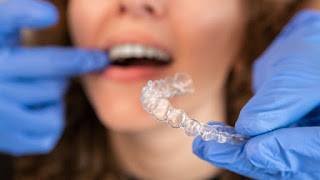Activator appliance
An activator appliance is a type of orthodontic device that is used to correct problems with the alignment of the teeth and jaws. It is typically used in children and young adults who have issues with their bite, such as an overbite or underbite. The activator appliance is a removable device that fits over the upper and lower teeth and works by gently moving the jaw into the correct position.
How to use activating devices?
The activator appliance is designed to be worn for several hours each
day, typically for around 16-20 hours. It is important to wear the appliance
consistently to achieve the desired results. The length of time the appliance
needs to be worn will depend on the severity of the orthodontic problem and how
quickly the teeth and jaw respond to treatment.
Types of activating appliances:
The activator appliance is one of several types of orthodontic devices
that can be used to correct bite problems. Other options include traditional
braces, clear aligners, and headgear. Your orthodontist will be able to
recommend the best treatment option for your individual needs.
Sometimes we ask What is
Orthodontics?
Activator orthodontics is a type of orthodontic treatment that uses a removable
orthodontics called an activator or
functional appliance to correct dental and skeletal issues. The activator is
designed to stimulate the growth of the jaw and improve the alignment of the
teeth. It works by applying gentle pressure to the teeth and jaws, which
encourages them to move into their correct positions.
What is activating orthodontics used for?
Activator orthodontics is often used to treat underbites, overbites,
crossbites, and other orthodontic problems. This type of treatment is
typically used in children and teenagers, as their jaws are still growing and
developing. However, it can also be used in adults in some cases. Activator
orthodontics is a relatively non-invasive and painless treatment option, and it
typically requires fewer visits to the orthodontist than traditional braces
colors.

Comments
Post a Comment